As avid travelers who have embarked on a five-year journey around the world, we have always prioritized our health but it hasn’t been easy. It is challenging to stay healthy anywhere but it is particularly challenging while traveling in different environments. Traveling gives the opportunity to savor diverse cuisines and enjoy meals in a myriad of restaurants. However with a nomadic lifestyle, we believe that is really important to also cook your own meals in order to stay healthy. In this post, we discuss how to stay healthy while traveling by balancing dining out versus cooking at home.
Dining Out While Traveling
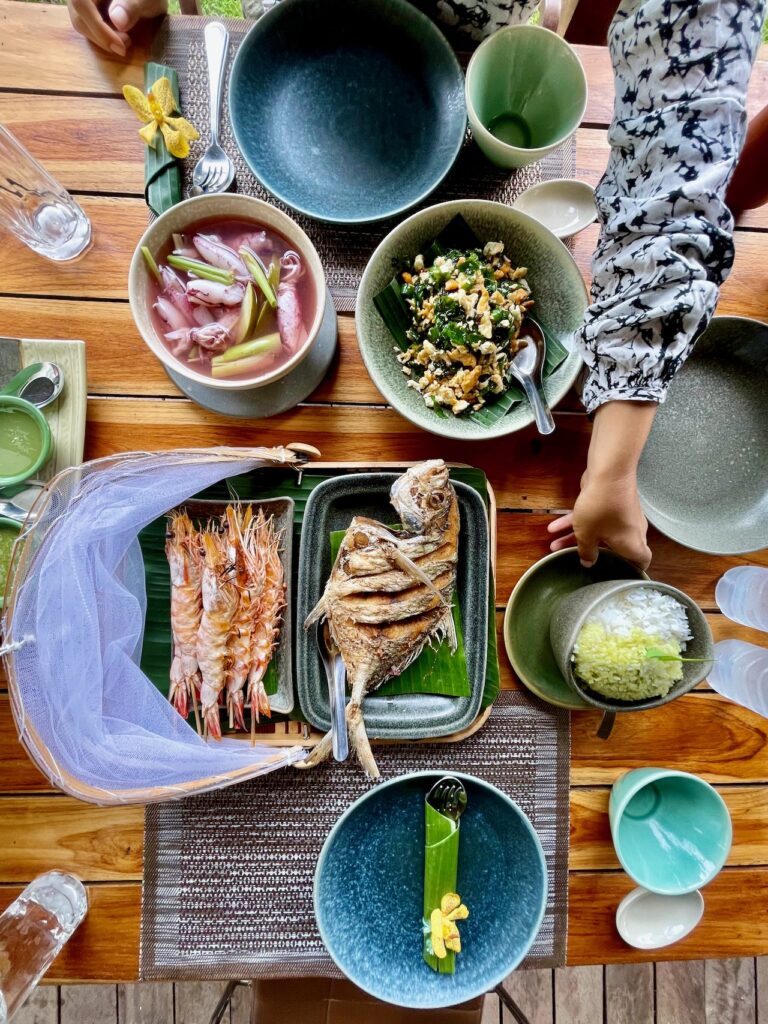

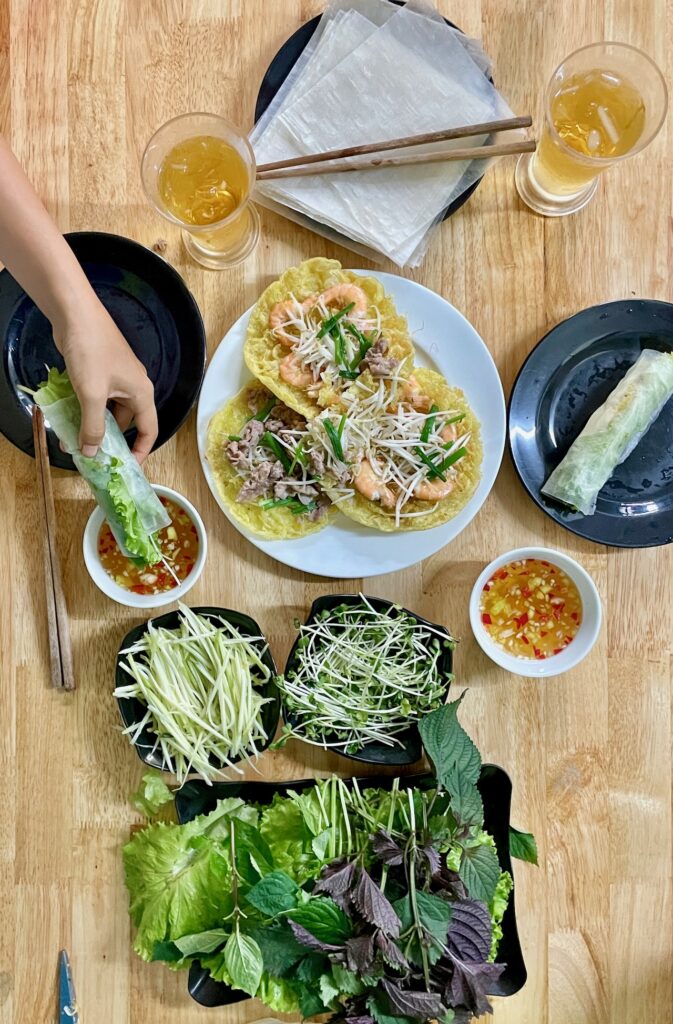


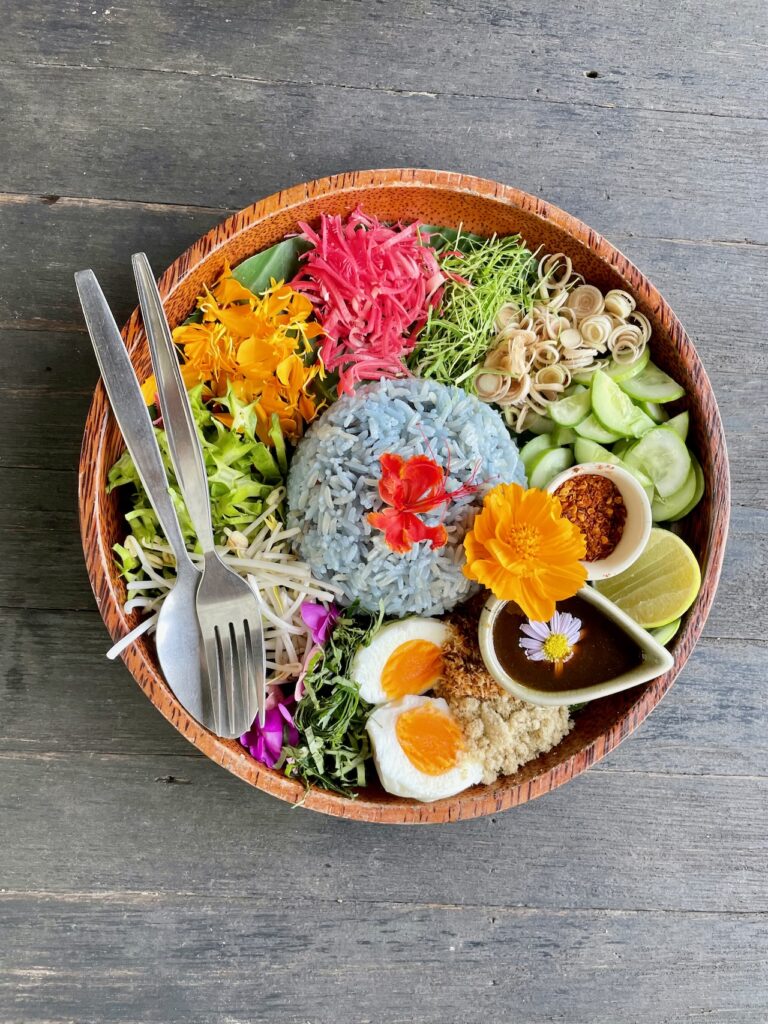
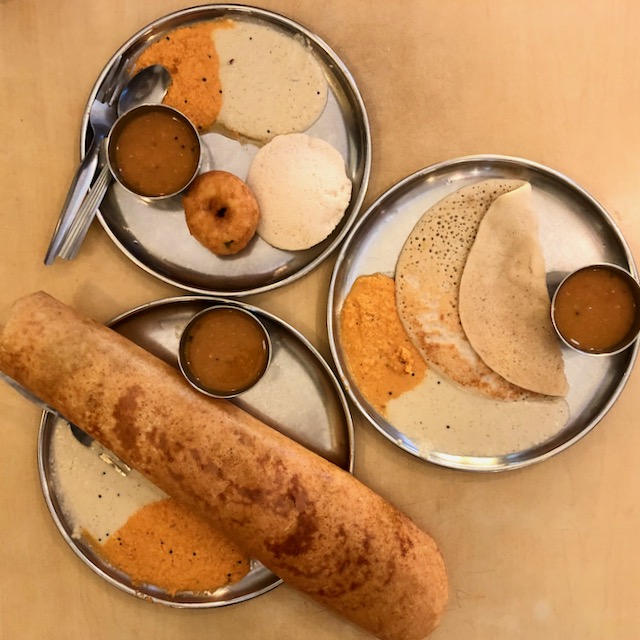
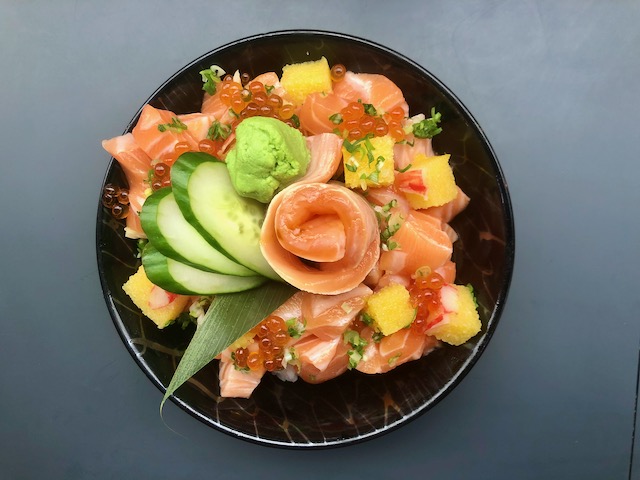
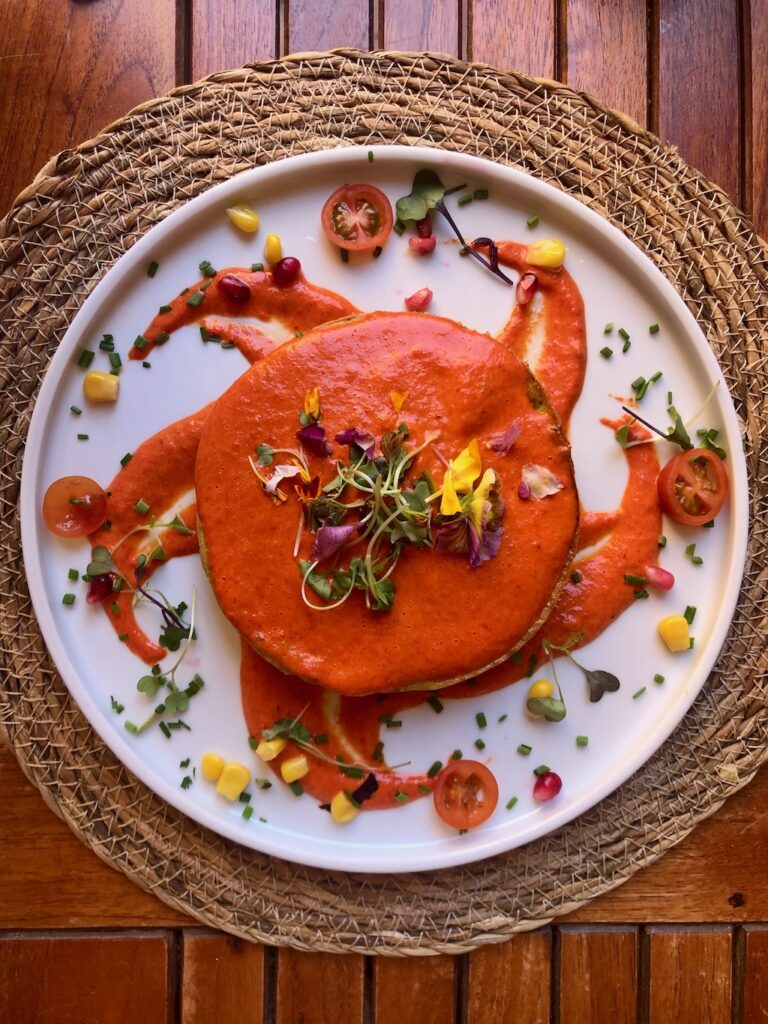
Let’s discuss the pros and cons of dining out:
The Pros of Dining Out While Traveling
- Embracing Local Flavors: The thrill of savoring authentic dishes from diverse cultures can be an utterly tantalizing experience – from relishing the vibrant paella in Spain and indulging in the delicate croissants of France, to discovering the bold flavors of Taiwanese street food, the rich spices of Malaysian rendang, and the fiery zest of Mexican street tacos.
- Culinary Adventure: Dining out encourages stepping out of your comfort zone and indulging in unfamiliar taste profiles, making every meal a new and exciting adventure.
- Social Interaction: Occasionally, dining out provides opportunities to connect with locals or fellow travelers, enhancing your cultural immersion through shared culinary experiences.
The Cons of Dining Out While Traveling
- Portion Control: Restaurants often serve larger portions, which can lead to overeating and excessive calorie consumption if not managed carefully.
- Hidden Ingredients: Lack of control over meal preparation can result in hidden sugars, unhealthy oils, and excessive salt, impacting the healthiness of your meal.
- Limited Dietary Preferences: For individuals with specific dietary needs, finding suitable options in restaurants can be a challenge. This rings particularly true for Mrs. NN, who adheres to a gluten and dairy-free diet.
Cooking at Home While Traveling

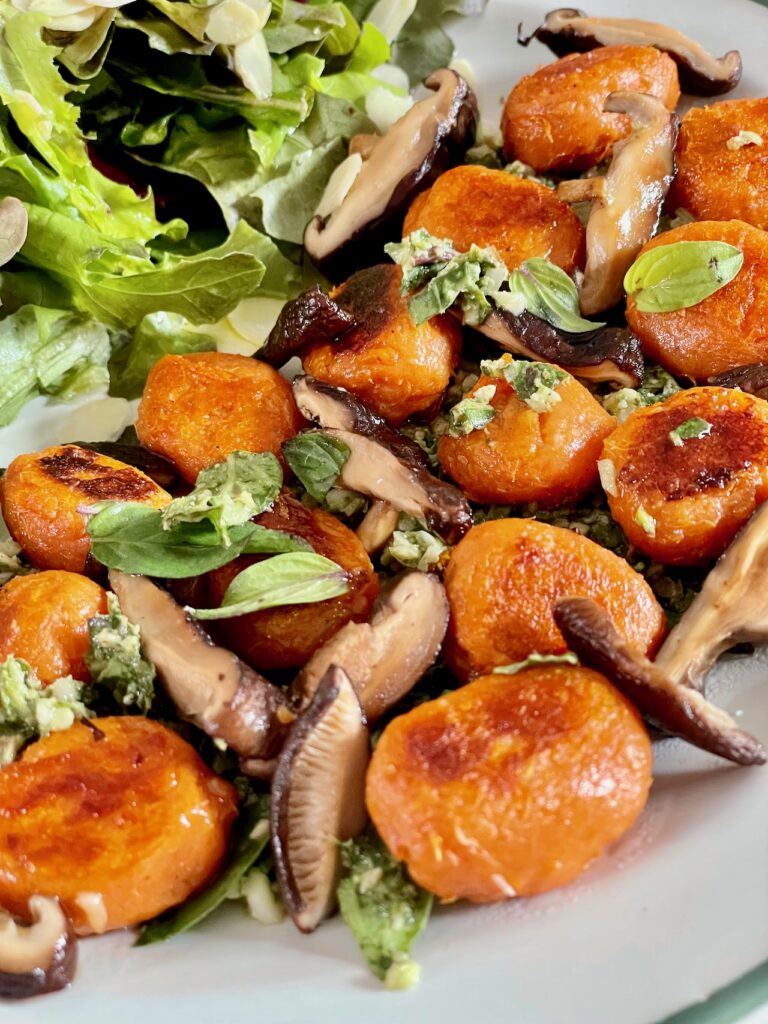
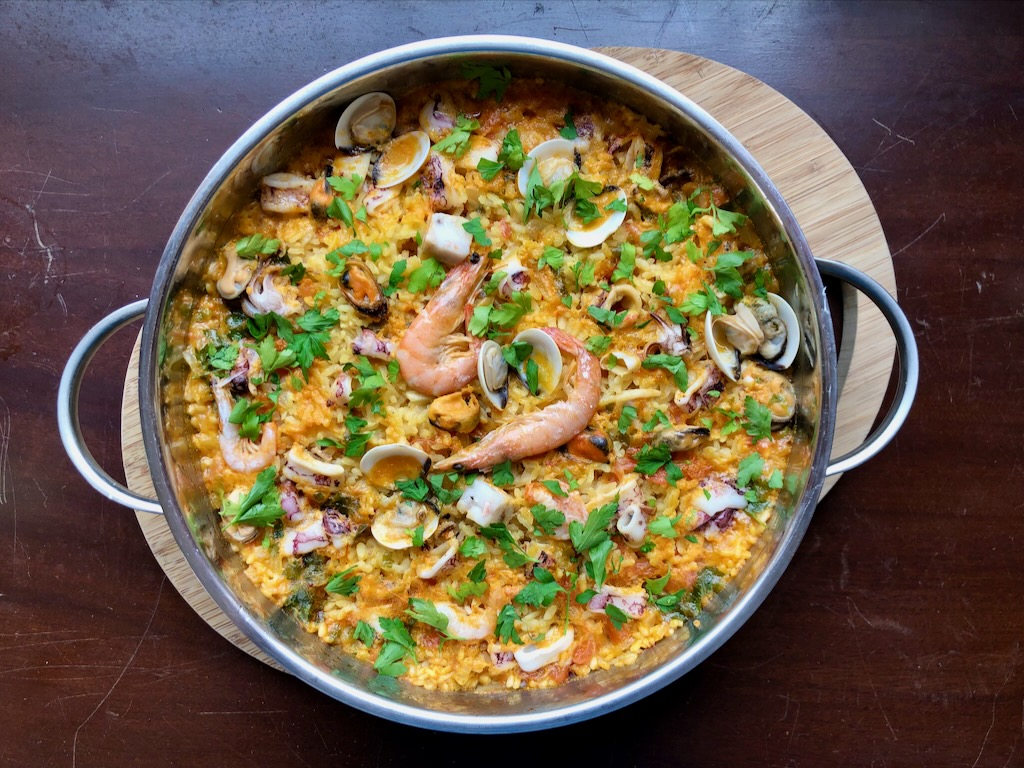
Let’s discuss the pros and cons of cooking at home.
The Pros of Cooking at Home:
- Controlled Ingredients: Cooking at home empowers you to select fresh, wholesome ingredients tailored to your preferences. You can include your favorite olive oil, salts, sweeteners, and spices to enhance the flavors of your dishes.
- Portion Management: You gain better control over portion sizes, aiding in maintaining a healthy calorie intake.
- Learning new Skills: Experimenting with local ingredients while cooking can offer an enjoyable way to discover the culture and flavors of a region.
- Meditative Experience: Cooking involves repetitive tasks that can act as a form of meditation, allowing you to unwind and find relaxation in the midst of a busy day.
The Cons of Cooking at Home:
- Time and Effort: Cooking at home may be time-consuming, which could pose a challenge during travels with packed itineraries.
- Missing Out on Local Delicacies: Opting to prepare meals at home might result in missing out on the opportunity to relish renowned dishes unique to a particular destination.
- Social Aspect: Eating in could limit interactions with locals and the chance to partake in the communal aspect of dining that often comes with restaurant experiences.
Finding a Balance between Dining Out vs Cooking
Since we are always in a new country, finding a balance between dining out and cooking at home is what we’ve decided to focus on. We’ve also been trying to apply the following principles:
- Plan Ahead: We invest a lot of time in research to find restaurants that offer healthier choices and cater to our dietary restrictions before heading out.
- Choose Wisely From the Menu: We opt for dishes that are not only delicious but also healthy, while allowing ourselves exceptions once in a while.
- Sharing Dishes: When dining out, we enjoy sharing dishes, which gives us the opportunity to sample a wider variety of food while enjoying smaller portions.
- Home-Cooked with a Twist: We enjoy experimenting with recreating local dishes at home using healthier cooking techniques.
- Cooking Classes: Whenever possible, we take cooking classes to learn from locals about traditional ingredients and cooking methods.
- Local & Sustaining Ingredients: When cooking at home, we prioritize sourcing fresh, local ingredients. This approach allows us to create meals that capture the essence of the destination while avoiding imported products (though we do make exceptions from time to time).
- Mindful Indulgence: During restaurant visits, we practice mindful eating by savoring each bite and stopping when satisfied. Admittedly, this can be challenging to uphold 🙂
By adhering to these principles, we’ve managed to curate a culinary experience that resonates with both our adventurous spirits and our commitment to staying healthy. Whether we’re relishing the aroma of spices in our own kitchen or savoring the vibrant offerings of a local eatery, our journey has become a balance of exploration and healthy choices.
Cost of Food Traveling the World
“We firmly believe that our health is our most precious asset. While cooking at home can offer financial benefits, it’s not the primary driving force behind our choice to cook more at home than dine out.”
Mr. Nomad Numbers
We can’t avoid talking about numbers on our blog so let’s take a comprehensive look at our food budget over the past 5 years.
Between 2018 and 2023, we dedicated around $15,000 USD to dining out, while spending about $19,000 USD towards preparing meals at home (Read: Unveiling the Real Costs of Our 5-Year Slow Travel Adventure Across the Globe). Delving further into the expense per meal, we find that dining out averaged about $12 per meal (for two people), while the cost per meal for our home-cooked delights stood at $7.65 (for the two of us). This calculation highlights that our expenditure on dining out exceeded our investment in cooking at home by approximately 1.6 times and we don’t have any issue with that.
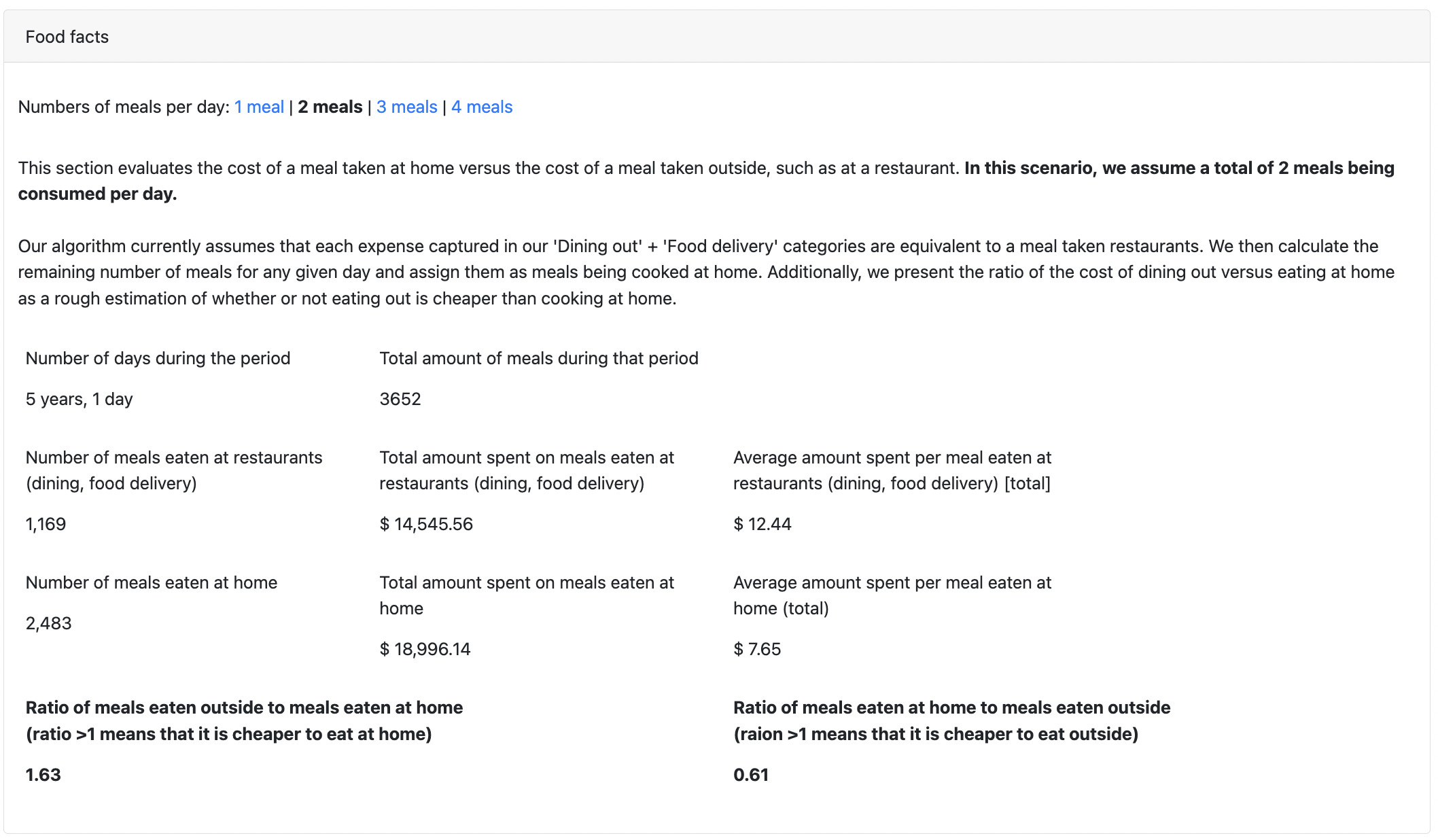
Final Thoughts
While both dining out and eating at home offer unique experiences, finding the equilibrium between culinary exploration and health-conscious choices is key. As slow travelers, we’ve learned that adopting a flexible approach—embracing local flavors while maintaining a commitment to our well-being—enhances our journey. So, whether you’re indulging in street food from a bustling market or crafting a meal in a cozy Airbnb, remember that every choice contributes to your holistic travel experience.
What about you? Do you enjoy cooking? How frequently do you dine out? Is striking a balance between the two something you strive for? Feel free to share your thoughts by leaving a comment in the section below!
Bon Appétit
and Safe Travels!




2 Comments
Linda Gerbec · August 28, 2023 at 4:58 am
I have two questions about this post. First, I see that you calculated the costs based on two meals per day. Is this a personal choice? My husband and I eat three meals per day, as I imagine most people do. Second, I see the average cost of a restaurant meal is around $12. If this is for two people, I wonder where do you eat? Do you order one dish and share it and forgo beverages?
Mr. Nomad Numbers · September 18, 2023 at 11:37 pm
We’re big fans of intermittent fasting, which means we stick to just lunch and dinner. This does lead to heartier portions than if we were eating three meals daily. We also don’t drink alcohol, so our budget reflects that. As far as the cost, $12 per meal is for two people, so it’s only $6 per person. This does make sense since we have eaten in places like South East Asia (SEA), which is closer to $3 per person (SEA is really cheap). However, that cost is offset by more expensive meals once we are in countries like Europe. Check our spending report per countries for a breakdown of such cost specific to that country (or city) – https://www.nomadnumbers.com/category/what/money/costofliving-reports/